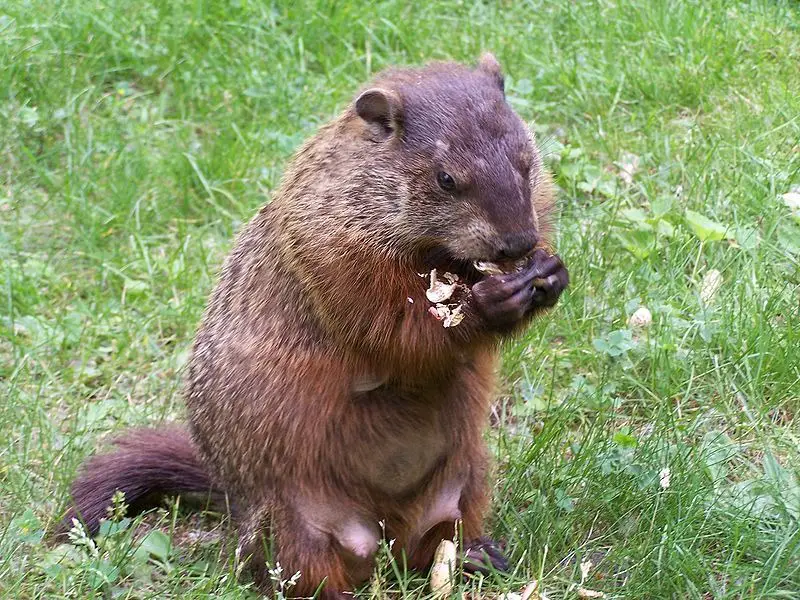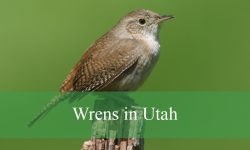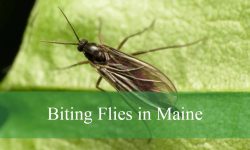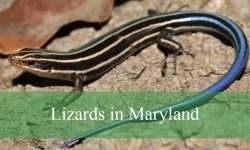Groundhogs, also known as woodchucks or whistle-pigs, are among the most recognizable members of the rodent family. Known for their burrowing habits and annual Groundhog Day fame, these animals are also notorious for raiding gardens and damaging crops. But what exactly do groundhogs eat?
This in-depth guide covers everything you need to know about a groundhog’s diet—what they eat in the wild, what attracts them to your yard, and how to protect your plants.
Understanding Groundhog Behavior and Diet

Before diving into the specific foods that groundhogs eat, it’s essential to understand their overall behavior and dietary habits. Groundhogs, also known as woodchucks, are members of the marmot family and are well-adapted to their environments. Their behaviors, particularly in relation to feeding, are tightly linked to the seasons and their need for survival throughout the year.
Groundhog Feeding Habits
Groundhogs are strict herbivores, meaning they consume only plant-based material. Their feeding times are diurnal, which means they are active and forage for food during daylight hours. Most commonly, they are seen feeding in the early morning and late afternoon when the temperature is cooler and the risk of predator encounters is relatively lower.
One interesting aspect of groundhog feeding behavior is how they eat. They typically sit up on their hind legs and use their dexterous front paws to hold and manipulate food—much like a human holding a sandwich. This upright posture not only helps them eat efficiently but also allows them to stay alert to potential danger while feeding. Groundhogs rarely stray far from the entrances to their burrows, preferring to feed within a short range so they can make a quick escape if threatened by predators such as foxes, coyotes, or birds of prey.
Their burrows play a critical role in their feeding routine. A well-established groundhog burrow system can have multiple entrances and exits, giving them an edge in evading danger. When foraging, they often create beaten paths through vegetation, which lead directly back to their homes. These pathways allow them to move quickly and safely while carrying food or escaping a threat.
Seasonal Eating Patterns
A groundhog’s diet is not static throughout the year—it changes depending on the season and the groundhog’s physiological needs. In the spring, groundhogs emerge from hibernation with a significant energy deficit and immediately begin feeding on fresh, nutrient-rich greens. Tender grasses, clover, and dandelion leaves are among their early spring favorites. This seasonal fresh growth is easy to digest and packed with the vitamins and minerals they need to replenish lost body mass.
During the summer months, groundhogs maintain a high level of activity and continue to feed heavily. This period is critical for building up the fat reserves they will need to survive the winter. Summer offers a bounty of vegetation, including garden crops, wildflowers, and leafy plants, allowing groundhogs to diversify their diet and consume large amounts of food each day.
In the fall, groundhogs shift their focus even more aggressively toward fat accumulation. Their metabolism begins to slow as they prepare for hibernation, and they become less selective with food, consuming large quantities of whatever vegetation is still available. They may even raid gardens or venture slightly farther from their burrows than usual in search of calorie-dense plants and fruits.
When winter arrives, groundhogs enter a deep hibernation that can last several months, depending on the climate of their region. During this period, they do not eat or drink at all. Instead, their bodies rely entirely on the fat reserves accumulated during the active months. Their metabolic rate drops drastically, allowing them to conserve energy until spring returns and they can begin the cycle anew.
What Do Groundhogs Eat in the Wild?
In their natural environments, groundhogs are highly adaptable herbivores that consume a broad variety of vegetation. Their wild diet is surprisingly diverse, with some studies showing that groundhogs may feed on over 100 different species of plants depending on regional availability and the time of year. This wide-ranging appetite plays a key role in supporting their nutritional needs and energy levels throughout the seasons.
Grasses and Herbs
Grasses form a foundational part of a wild groundhog’s diet. These animals are efficient grazers and often munch on nutrient-rich grasses such as timothy grass, clover, and alfalfa, especially in open meadows and fields. These grasses provide essential carbohydrates, which help fuel their active lifestyles in spring and summer.
In addition to common grasses, groundhogs are fond of soft-stemmed herbs and low-growing plants. They frequently forage for dandelions, plantain leaves, and chickweed, all of which are abundant in untended pastures and natural clearings. These herbaceous plants are not only easy to digest but are also packed with vitamins, fiber, and moisture, making them an ideal staple for groundhogs in the wild.
Leaves and Shoots
Young, tender shoots and leafy greens are especially appealing to groundhogs. These animals prefer new growth because it’s softer, more palatable, and easier on their teeth. In woodland edges and forest clearings, groundhogs will nibble on the leaves of wild asters, goldenrods, and wild lettuce—all common plants in their native habitats.
These types of plants offer more than just energy. Many wild greens are rich in minerals and fiber, supporting healthy digestion and helping groundhogs maintain a balanced diet. The constant chewing of fibrous vegetation also helps them manage their ever-growing incisors, which are characteristic of rodents.
Wild Fruits and Berries
Although not as readily available as grasses and greens, wild fruits are a seasonal treat that groundhogs eagerly consume when they get the chance. In summer and early fall, they feast on berries such as raspberries, blackberries, and mulberries, often found on the edges of woodlands or growing along fences and hedgerows.
Fallen apples, pears, and other orchard fruits also attract groundhogs, especially in rural or semi-wild areas. These sugary foods are high in natural carbohydrates and help groundhogs build fat quickly as they prepare for hibernation. While they don’t typically climb trees to obtain fruit, they’ll readily take advantage of anything that drops to the ground within reach.
What Do Groundhogs Eat in Gardens and Farms?
While groundhogs are fascinating creatures in the wild, they often become unwelcome guests in gardens and farms. Their natural foraging instincts don’t discriminate between wild vegetation and cultivated crops, which makes them a frequent nuisance to homeowners and agricultural workers. Given their large appetites and ability to consume large amounts of vegetation quickly, groundhogs can cause significant damage in a short period—especially during the peak of the growing season.
Vegetables Groundhogs Commonly Eat
Groundhogs are particularly drawn to gardens because they offer easy access to soft, nutrient-rich vegetables. These cultivated crops are far more tender and flavorful than many of the wild plants they normally consume, making them irresistible to a hungry groundhog.
-
Tomatoes – The juicy texture and high water content make tomatoes a favorite target. Groundhogs often take bites from multiple fruits, leaving damaged crops behind.
-
Cucumbers – Refreshing and crunchy, cucumbers are another go-to snack, especially in the heat of summer when hydration is important.
-
Beans and Peas – Legumes like green beans and snap peas are packed with protein and fiber. Groundhogs will often strip an entire row of plants overnight.
-
Carrots – Groundhogs will dig into the soil to access both the sweet underground roots and the leafy green tops.
-
Lettuce and Spinach – These soft, tender greens are among the easiest for groundhogs to consume and are usually eaten to the ground.
Their preference for these vegetables often leads to widespread destruction in vegetable beds. A single groundhog can decimate a garden patch, making prevention and control measures essential for gardeners.
Fruits and Berries in Gardens
Fruit-bearing plants are another high-reward food source for groundhogs. These animals are opportunistic feeders and will readily indulge in whatever is seasonally available in a cultivated setting.
-
Strawberries – Ground-level and sweet, strawberries are easy pickings and quickly consumed.
-
Melons – Groundhogs are particularly fond of cantaloupes and watermelons. They’ll gnaw through the rinds to reach the sugary flesh inside.
-
Apples and Peaches – While groundhogs don’t typically climb trees, they will eat any fruit that has fallen to the ground. In some cases, they may pull down low-hanging branches to access the fruit.
These sweet treats are packed with calories, making them especially attractive to groundhogs preparing for hibernation. Fruit loss can be significant if groundhogs are left unchecked in orchards or berry patches.
Flowers and Ornamental Plants
Groundhogs aren’t picky eaters, and their appetite sometimes extends to plants not typically grown for food. When vegetables and fruits are in short supply—or simply out of reach—groundhogs will turn their attention to flowers and ornamental greenery.
-
Marigolds – Despite their strong scent, marigolds are not immune to groundhog grazing.
-
Sunflowers – Both the leaves and developing seeds may be consumed.
-
Zinnias – Bright and attractive to pollinators, zinnias are often nibbled down to their stems.
In addition to flowers, groundhogs may also eat young tree bark, ornamental shrubs, and even some garden weeds. Their feeding habits can make them a widespread threat to landscaping as well as food crops, which is why many gardeners resort to fencing, repellents, or humane trapping to deter them.
Do Groundhogs Eat Insects or Animal Matter?
Although primarily herbivorous, groundhogs have occasionally been observed eating insects, small grubs, or even snails. However, this is rare and not a major part of their diet.
Accidental Ingestion
Sometimes while consuming vegetation, they may accidentally ingest insects attached to leaves or stems. This isn’t intentional but may contribute trace protein.
Opportunistic Behavior
In very rare situations or under stress, groundhogs might scavenge on carrion or small invertebrates, but this is not common or sustainable for their nutritional needs.
How Groundhogs Forage and Store Energy
Unlike some other animals that stash food for later use, groundhogs do not create food caches or stockpiles. Instead, their survival strategy revolves around seasonal foraging and strategic fat accumulation. Every bite they take during the active months is part of a bigger goal: preparing their bodies for the long, foodless stretch of winter hibernation.
Preparing for Hibernation
As summer winds down and fall approaches, groundhogs begin an intense period of foraging. Their feeding activity becomes more aggressive and frequent, driven by the biological urge to fatten up before hibernation. This phase, known as hyperphagia, is marked by a sharp increase in calorie intake.
During late summer and early fall, groundhogs consume nutrient-dense foods such as fruits, legumes, and leafy greens—anything high in carbohydrates and natural sugars. Their focus shifts from routine grazing to energy maximization, ensuring that every meal contributes to fat storage. This behavior is crucial because once winter sets in, groundhogs will not eat or drink again until spring. Instead, they enter a state of true hibernation, during which their metabolic rate plummets and bodily functions slow to a bare minimum.
Weight Gain Strategy
To endure months of inactivity in cold underground burrows, groundhogs must accumulate substantial fat reserves. Between May and October, it is not uncommon for a groundhog to double its body weight, particularly if food is abundant and environmental conditions are favorable. A healthy adult groundhog can weigh between 5 to 14 pounds, depending on how successful their foraging season was.
This dramatic weight gain is more than just a survival tactic—it’s their only lifeline through winter. The stored fat acts as both fuel and insulation, allowing groundhogs to remain in a torpor state without needing external food or water sources. Their bodies draw on this internal energy supply to maintain vital functions like heart rate, respiration, and minimal brain activity. Without enough stored fat, a groundhog would not survive the long hibernation period.
Interestingly, groundhogs also choose and maintain their burrows with energy conservation in mind. Their hibernation chambers are typically located below the frost line to ensure consistent temperatures and are lined with grass and leaves for added insulation. These preparations, combined with their intensive foraging and fat-storing strategies, showcase how groundhogs have evolved to thrive in temperate environments with harsh winters.
What Do Baby Groundhogs Eat?
Baby groundhogs, also known as kits or pups, begin life in an extremely dependent state. Born blind, hairless, and completely helpless, they rely solely on their mother’s care and nourishment during their earliest weeks. The diet of a baby groundhog changes significantly as it grows, gradually transitioning from milk to solid plant-based foods.
Nursing and Weaning
For the first three to four weeks after birth, baby groundhogs are entirely reliant on their mother’s milk. During this nursing period, the mother’s milk provides all the nutrients the kits need to develop bones, grow fur, and build strength. The kits remain inside the safety of the burrow, where the mother tends to them and protects them from predators.
As the young groundhogs grow and open their eyes around the fourth week, they begin to explore the burrow more actively. This is also when the weaning process starts. The mother gradually introduces them to soft vegetation, such as tender grasses, clover, and young leaves. These easily digestible greens are ideal for their developing digestive systems and help them prepare for a fully herbivorous diet.
Transition to Adult Diet
By the time baby groundhogs are about six weeks old, they are ready to leave the burrow for the first time. At this stage, their bodies are strong enough to handle a wider variety of plant matter. The young groundhogs quickly begin foraging for food on their own, sampling roots, shoots, flowers, and leafy greens just like adult groundhogs.
While the mother may still provide some guidance during their early explorations, the kits rapidly become independent. Their diet continues to expand to include wild herbs, berries, and even garden vegetables if they’re near human settlements. By the end of their second month, most juvenile groundhogs have fully transitioned to the adult herbivorous diet and are capable of surviving on their own.
Plants Groundhogs Avoid
Despite being known for their voracious appetites, groundhogs do have their limits when it comes to certain plants. They typically steer clear of vegetation that is toxic, bitter, or highly aromatic. Gardeners and homeowners can use this knowledge to help protect their landscapes and reduce the risk of groundhog damage.
Toxic or Bitter Plants
Groundhogs instinctively avoid plants that contain natural toxins or possess an unpleasant, bitter taste. These plants can be harmful if ingested and are usually left untouched by groundhogs and many other herbivores.
-
Daffodils (Narcissus spp.) – All parts of the daffodil plant are toxic, especially the bulbs. The presence of lycorine, a bitter alkaloid, deters most animals, including groundhogs.
-
Foxglove (Digitalis purpurea) – This striking flowering plant contains cardiac glycosides, which are highly toxic to mammals. Its toxicity makes it unpalatable to groundhogs.
-
Lily of the Valley (Convallaria majalis) – Despite its delicate appearance, this plant is highly poisonous. It contains cardiac toxins that can affect the heart and is usually avoided by wildlife.
-
Rhubarb Leaves (Rheum rhabarbarum) – While the stalks are edible to humans, the leaves contain oxalic acid and other compounds that are toxic to groundhogs and most animals.
These plants can be strategically included in landscaping to help deter groundhogs, especially when planted around more vulnerable crops or flowers.
Aromatic Herbs
Groundhogs also dislike strong-smelling herbs. The pungent oils in these plants can irritate their sensitive noses and act as natural repellents. Incorporating these herbs into your garden not only adds flavor to your meals but also creates a natural barrier against groundhog intrusion.
-
Mint (Mentha spp.) – Its sharp scent and fast-growing nature make mint an excellent companion plant to deter pests, including groundhogs.
-
Sage (Salvia officinalis) – With its woody stems and potent aroma, sage is rarely bothered by groundhogs and can be used to protect nearby crops.
-
Lavender (Lavandula spp.) – Valued for its calming fragrance and purple blooms, lavender repels many wildlife species due to its strong essential oils.
-
Thyme (Thymus vulgaris) – This low-growing herb emits a strong scent that discourages nibbling and can be planted along borders or walkways.
-
Oregano (Origanum vulgare) – Known for its robust flavor in cooking, oregano’s pungent oils are off-putting to groundhogs and other garden pests.
Planting these herbs alongside more susceptible plants can help reduce the risk of damage while adding beauty and function to your garden space.
How to Prevent Groundhogs from Eating Your Garden
Groundhogs may look cute, but their appetite for garden crops can quickly turn them into a nuisance. Fortunately, there are several humane and effective ways to protect your plants without harming the animals. By combining physical barriers, scent deterrents, strategic planting, and habitat management, you can create an environment that’s less appealing to these persistent foragers.
Fencing and Barriers
A strong physical barrier is often the most reliable method for keeping groundhogs out of your garden. Standard garden fencing may not be enough, as groundhogs are skilled diggers and surprisingly agile climbers.
-
Height: Use a fence that is at least 3 feet tall. For extra protection, angle the top 12 inches outward to make climbing difficult.
-
Underground Depth: Bury the bottom of the fence at least 12 inches deep to prevent digging underneath. For even better results, bend the underground portion outward in an L-shape to block tunneling.
-
Material: Use heavy-duty hardware cloth or welded wire fencing with small openings (1 inch or less) to ensure groundhogs can’t squeeze through.
Properly installed fencing provides long-term protection, especially when maintained regularly for signs of burrowing or damage.
Companion Planting
Strategic planting can make your garden less inviting to groundhogs. Companion planting involves growing certain plants near others to provide natural pest resistance.
-
Repellent Plants: Surround your garden with strong-smelling plants that groundhogs dislike, such as garlic, chives, onion, or rue. These create an unpleasant sensory experience and can mask the scent of more desirable crops.
-
Buffer Zones: Plant unpalatable herbs and flowers around the perimeter to act as a natural barrier, deterring entry and reducing curiosity.
While companion planting alone may not stop a determined groundhog, it works well when combined with other methods like fencing and repellents.
Natural Repellents
Groundhogs have sensitive noses, making them susceptible to scent-based deterrents. Natural repellents can be sprayed directly around garden beds, entry points, and burrow entrances.
-
Castor Oil: This non-toxic oil irritates groundhogs’ digestive systems and can be applied as a spray to lawns or garden beds. It also helps drive them away from burrows.
-
Hot Pepper Spray: A mixture of crushed hot peppers, garlic, and water can be sprayed on plants to deter chewing. Commercial pepper-based repellents are also available.
-
Predator Urine: The scent of fox or coyote urine, available at garden centers, triggers a flight response in groundhogs. Place soaked cotton balls or commercial dispensers near burrow entrances or garden borders.
These repellents may need to be reapplied after rain or heavy watering for continued effectiveness.
Clean Up and Habitat Management
Groundhogs are more likely to take up residence in areas that provide shelter. Removing attractive hiding spots can help make your yard a less appealing home.
-
Eliminate Brush Piles: Piles of branches or overgrown shrubs create ideal cover for groundhog burrows.
-
Trim Tall Grass: Regularly mow your lawn and trim around fence lines and garden beds to eliminate hiding spots.
-
Move Wood and Rock Piles: Stack firewood and rocks away from gardens or elevate them to reduce denning opportunities.
-
Block Off Spaces Under Structures: Use wire mesh to seal off spaces beneath sheds, porches, and decks where groundhogs might dig.
Good yard hygiene not only deters groundhogs but also discourages other unwanted wildlife from moving in.
The Role of Groundhogs in the Ecosystem
Although groundhogs are often viewed as destructive to gardens and farms, they actually fulfill several essential roles within their native ecosystems. As burrowing herbivores, groundhogs contribute to soil health, plant diversity, and the balance of predator-prey dynamics. Their natural behaviors support a wide array of wildlife and ecological processes.
Soil Aeration
One of the most beneficial ecological services groundhogs provide is soil aeration. Their extensive burrowing systems—sometimes stretching 30 feet or more—break up compacted soil layers, improving the flow of air, water, and nutrients underground.
-
Improved Drainage: Burrows allow rainwater to penetrate deeper into the soil, reducing surface runoff and erosion.
-
Root Development: Enhanced aeration supports healthier root systems for nearby plants by giving roots better access to oxygen and nutrients.
-
Microbial Activity: Loosened soil fosters increased microbial activity, which plays a crucial role in nutrient cycling and soil fertility.
In this way, groundhogs contribute to long-term soil rejuvenation and promote robust plant growth, even if indirectly.
Food Source for Predators
Groundhogs also play a critical role in sustaining local food webs. As a mid-sized mammal, they serve as a vital food source for a variety of predators.
-
Natural Prey: Foxes, coyotes, bobcats, hawks, eagles, and even large snakes prey on groundhogs, especially the young or weakened individuals.
-
Balance of Populations: By supporting predator populations, groundhogs help maintain ecological balance and reduce the likelihood of overpopulation among carnivores’ alternative prey species.
In ecosystems where groundhog populations are healthy, predator numbers also tend to be more stable—supporting biodiversity at higher trophic levels.
Seed Dispersal
While foraging, groundhogs consume a wide variety of fruits, vegetables, and herbaceous plants. This feeding behavior indirectly aids in seed dispersal across their range.
-
Spreading Seeds: Undigested seeds are often deposited through droppings away from the parent plant, helping to colonize new areas.
-
Plant Diversity: This contributes to increased plant diversity in grasslands, woodlands, and disturbed areas—particularly important for native plant regeneration.
By transporting seeds through their movements and digestion, groundhogs help foster a more resilient and diverse plant community, which in turn benefits pollinators and herbivores alike.
Fun Facts About Groundhog Eating Habits
Let’s end with a few fun and fascinating facts about groundhogs and their diet.
They’re Selective Eaters
Despite their reputation, groundhogs are surprisingly picky and often sample several plants before settling on a favorite.
They Can Climb and Swim
To access food, groundhogs will climb low trees and fences or swim across ponds—especially if fruit or vegetables are involved.
One Groundhog Can Eat a Lot
A single groundhog can consume over a pound of vegetation per day, making them incredibly efficient (and destructive) foragers.
Final Thoughts
Groundhogs are fascinating creatures with complex dietary habits. While primarily herbivores, their feeding behavior adapts to seasonal availability and local conditions. Understanding what groundhogs eat not only helps wildlife enthusiasts appreciate them more deeply but also gives gardeners and homeowners the knowledge needed to protect their crops and plants.
Whether you’re trying to prevent groundhog damage or simply learning more about these burrowing mammals, knowing what they eat is the first step to peaceful coexistence—or effective deterrence.






